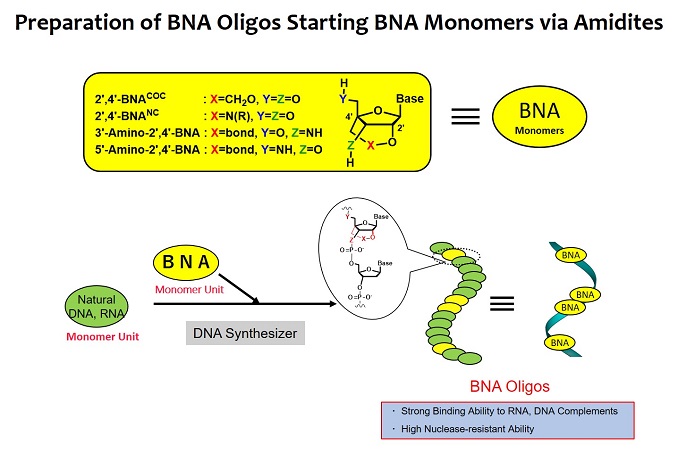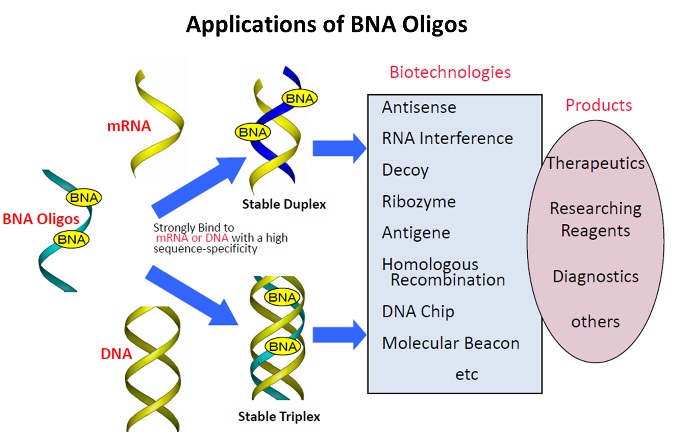BNA™ Technology
BNA Technology
Natural or unnatural single-stranded nucleic acids can bind to the complementary nucleic acid strand(s) with sequence specificity to form duplex or triplex structure. Such property could play a crucial rule for developing various bio-products through successful application of gene-related biotechnologies.
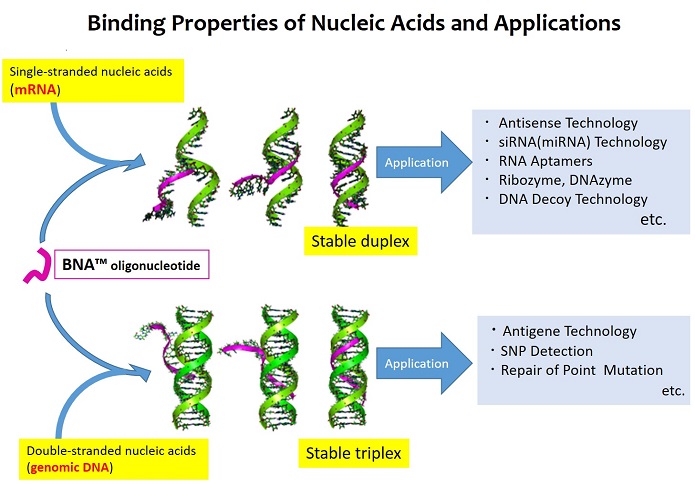
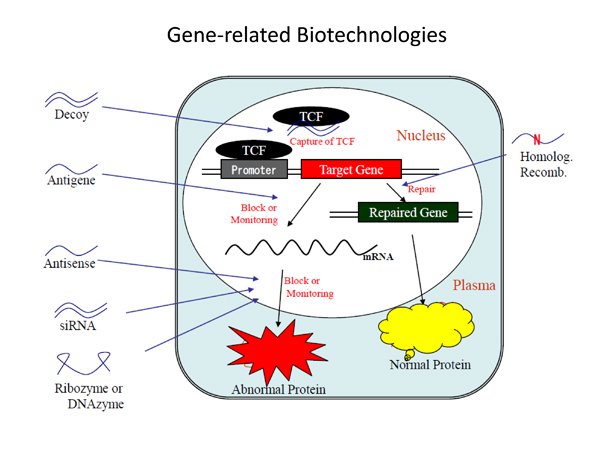
Natural nucleic acids (DNA and RNA), however, are well known to have not so high binding ability and decompose rapidly by nucleases, concluding less usefulness as a molecular tool for biotechnologies. Numbers of artificial nucleic acids have been developed for excellent tool of the biotechnologies. In 1997, the first generattion bridged nucleic acid, 2’-O,4’-C-methylene-bridged nucleic acid(2’,4’-BNA) was created as a novel nucleic acid analog, a potential molecular tool for biotechnologies, on a basis of conformational features of natural nucleic acids. 2’,4’-BNA-oligos (oligonucleotides modified with one to several unit(s) of 2’,4’-BNA monomer) exhibit extremely high binding abilities against not only single-stranded RNA, DNA complements but also double-stranded DNAs, along with a moderate nuclease resistant property. Nowadays, 2’,4’-BNA is widely used for various practical applications, such as for therapeutics, diagnostics, researching reagents, as the name “LNA.”
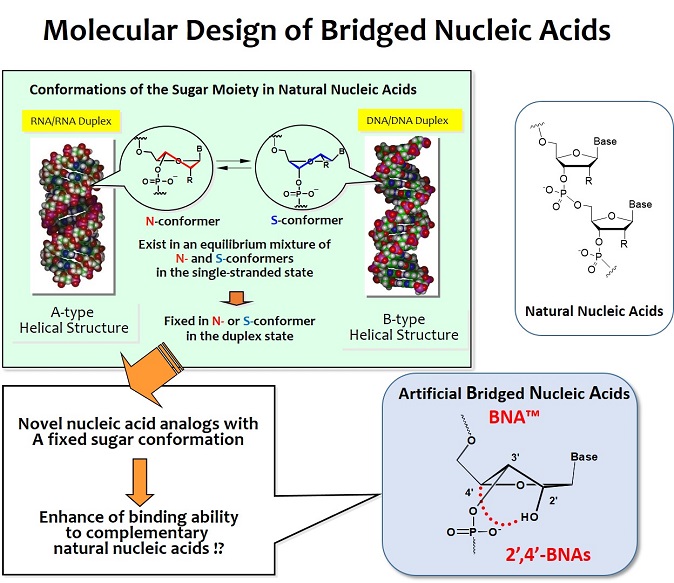
Following innovation of 2’,4’-BNA (LNA), we have been continuously producing new generation bridged nucleic acid: 2’,4’-BNACOC , 3’-, and 5’-amino-2’,4’-BNA (the second generation) gain higher nuclease resistant ability with remaining strong binding abilities, and 2’,4’-BNANC(the third generation) is shown to be most potential from the viewpoints of both binding and nuclease resistant abilities. These BNA, possessing desired profiles for application to biotechnologies, should be “key materials” to make various kinds of valuable gene-related bio-products.
Various types of bridged nucleic acids
◆1st generation: 2', 4'-BNA(LNA)
2',4'-BNA(LNA) is a new type of an artificial nucleic acid. It is now widely used for the development of drug candidates, in vitro diagnostic reagents, and research use reagents.
※RIKEN GENESIS does not handle 2',4'-BNA (LNA).
◆2nd generation: 2', 4'-BNACOC, 3'-Amino-2', 4'-BNA
2’-O,4’-C-methylenoxymethylene bridged nucleic acid (2’,4’-BNACOC) has a seven-membered bridged structure. 3'-Amino-2', 4'-BNA has a six-membered bridged structure with a N3'→P5' phosphoramidate linkage. Both 2', 4'-BNACOC and 3'-Amino-2', 4'-BNA have higher nuclease resistance than the 1st generation bridged nucleic acids.
◆3rd generation: 2',4'-BNANC
2’-O,4’-C-aminomethylene bridged nucleic acid (2’,4’-BNANC) has a six-membered bridged structure with an N-O linkage. Compared to 1st and/or 2nd generation bridged nucleic acids modified oligonucleotides, 2',4'-BNANC modified oligonucleotides have:
(i) Equal or higher binding affinity to complementary RNA and DNA strands with excellent sequence selectivity,
(ii) Selectively higher binding affinity for RNA over DNA,
(iii) Stronger and more sequence selective triplex-forming characters,
(iv) Higher nuclease resistance, even higher than the S-oligonucleotide.
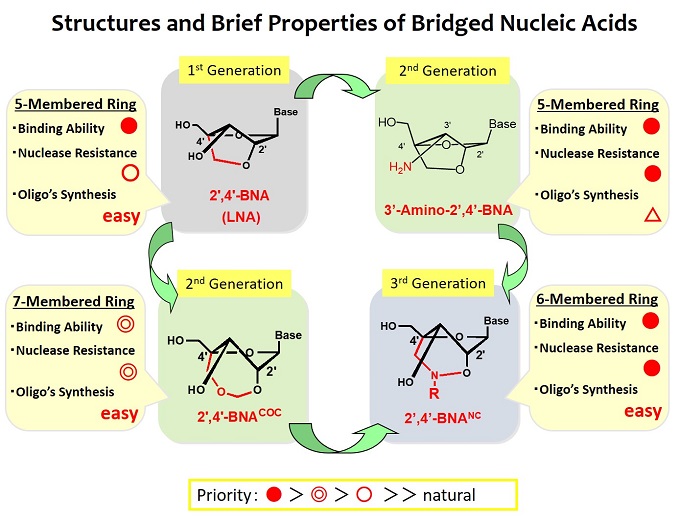
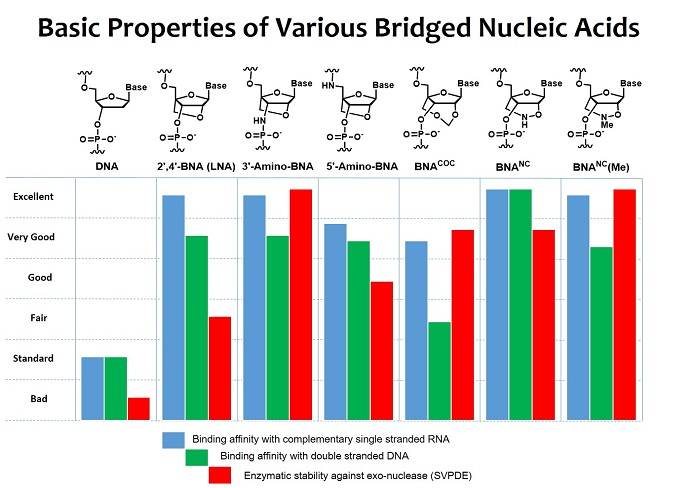
How to use BNA
